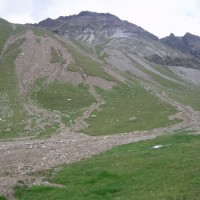Connecting European Connectivity Research
Cost Action ES1306 (Connecteur)

Background
Water and sediment connectivity has emerged in recent years as a significant conceptual framework for understanding the transfer of surface water and sediment through landscapes. Connectivity can be seen both as a driver of hydrological and geomorphic processes within a catchment and as an emergent catchment property that is the result of processes acting at different scales.
Purpose
The aim of the Action is to form an EU-spanning network of Connectivity scientists, to share expertise and develop a consensus on the definition and scientific agenda regarding the emerging field of water and sediment connectivity within Europe (and the diversity of European environments), and to identify potential for synergy with other disciplines and research applications in practice.
Methods
The Action will:
- Form a network of Earth scientists that is composed of experts in different disciplines of connectivity research, and promote participation of Early Stage Researchers (ESRs);
- Organize workshops, trainings, and ad hoc ‘think tanks’ related with connectivity;
- Disseminate its deliverables towards scientists and end users by publishing findings in scientific journals, flyers, websites and in open access e-learning tools and traditional communication media.
Results
The cooperation and exchange with researchers from different disciplines will increase the understanding of all aspects of connectivity and strengthen the scientific network. Networking and preparation of future research proposals and exchange of students/ESRs and senior researchers will enable further interdisciplinary cooperation pushing research forward.
Products
Main products will consist of scientific publications on theory, measuring and modelling approaches and DEM-based, field-calibrated connectivity indices.
Conclusions
The Action does not repeat but complements current European research programmes in its dedicated focus on broadening the understanding of hydrological and sedimentary processes and the impact external factors have on this system. To enable the transfer from science to management tool for society, academic experts, local knowledge and field experts need to be brought together, to facilitate multidisciplinary research, sharing knowledge on best practice and new techniques through networking.







